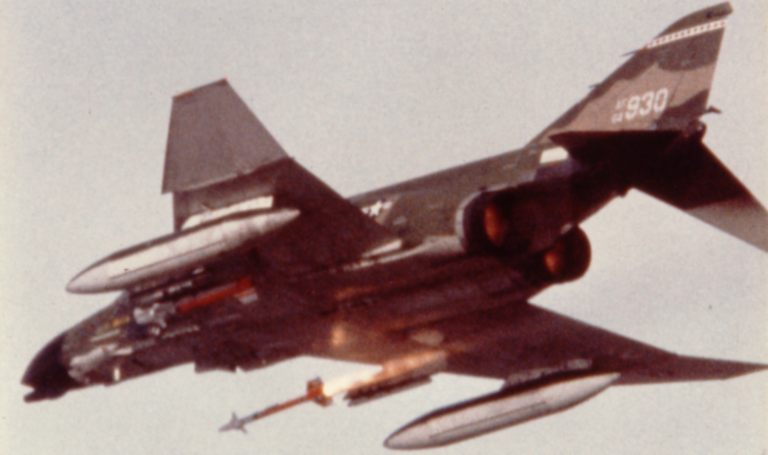During my F-4E tour with the 36 Tactical Fighter Squadron (aka The Fantastic Flying Fiends) at Oscan AB, ROK, we deployed to Clark AFB, Philippines for Cope Thunder Exercises. On one such deployment, we had the opportunity to live fire AIM-9P Sidewinder Missiles at Firebee target drones. The heat seeking AIM-9P was part of our normal wartime load-out of missiles along with the radar guided AIM-7E Sparrow missile. The F-4 was designed to carry four of each type for a total of eight which was quite an offensive punch.

So, on live fire day, there was an EXTENSIVE pre brief on all the facets of missile preflight, safety, ROE, safety, range procedures, safety, missile employment envelope, safety, live fire procedure, safety, event recording, safety, RTB in the event of a hung missile, safety, normal rtb, post flight inspection, safety, and debrief requirements. One of the many briefing items emphasized was to “not sweeten the shot as you would in combat to ensure a kill because we don’t want you to kill the drone. We want to use it again”. Every single one of us sat there with the exact same thought as we heard that; “We are flying a fire breathing fighter. We are trained to kill the enemy with said fire breathing fighter and you’re telling us not to kill the enemy drone with a live AIM-9P! R I G H T!”
That drone is going to die today!
With the mass briefing complete, we do a flight brief, suit up, step to the jets, preflight, mount up, and bring the J79s to life. From there, taxi to EOR (end of runway) inspection where the EOR crew chiefs do their normal inspection plus, pull the safety pin from the live AIM-9P that is now all ours.
We then takeoff and depart for the over water live fire range complex. Once there, we check in with GCI (ground controlled intercept) take their vector for an intercept on the Firebee. My crewed back seater, Hooter, quickly picks up a radar contact slightly offset to the right on our nose. I have selected the Sidewinder on my weapons panel and armed it. We are ready to breath fire. We will be looking down at the drone with water as backdrop. As the range to the drone counts down, we are hearing an occasional moan from the missile’s IR (infrared) seeker head as it picks up spurious hot spots in front of us. About ten miles out, I pick up a visual on the drone. Hooter is calling out vectors to make the stern conversion so we can stuff this Sidewinder up the drone’s jet engine exhaust, instead of the hot flare pot attached to its right wing tip. With about 500 knots of airspeed built up, I start a hard turn toward the drone and start getting the characteristic growl of a full on IR heat signature. At this point the drone is passing about 45 degrees right. This is the point, with a healthy growl in the headset, they wanted us to launch the missile in order to explore the outer edges of the effective employment envelope. Well, I pulled harder to swing around the circle, and let the Sidewinder go. I was astonished at how fast and maneuverable it was. It was more like a lightening bolt as it flew approximately half way to the drone, cranked hard right and went straight to the flare pot on the right wingtip and blew it off along with part of the wing tip. To this day, I’m sure that when I called “FOX 2” (Heat seeker launched) that the drone ground controller pulled the drone’s jet engine to idle, making it a cooler heat signature than the wingtip flare pot.
LESSON LEARNED: Prior to this live fire, I and most everyone else trained against IR missile shots to go, idle, boards (speed brakes), and hard turn to rotate the exhaust and deny the offending missile a heat source when hearing a Fox 2 call in trading.. Because this missile was so incredibly fast, all of this would be useless as a defense. The missile would reach its intended target before the reactive actions could take place. From here on I trained myself and others to maximize visual lookout for the opponent. If we didn’t see the heater coming off the rail, it was too late to defeat the missile.